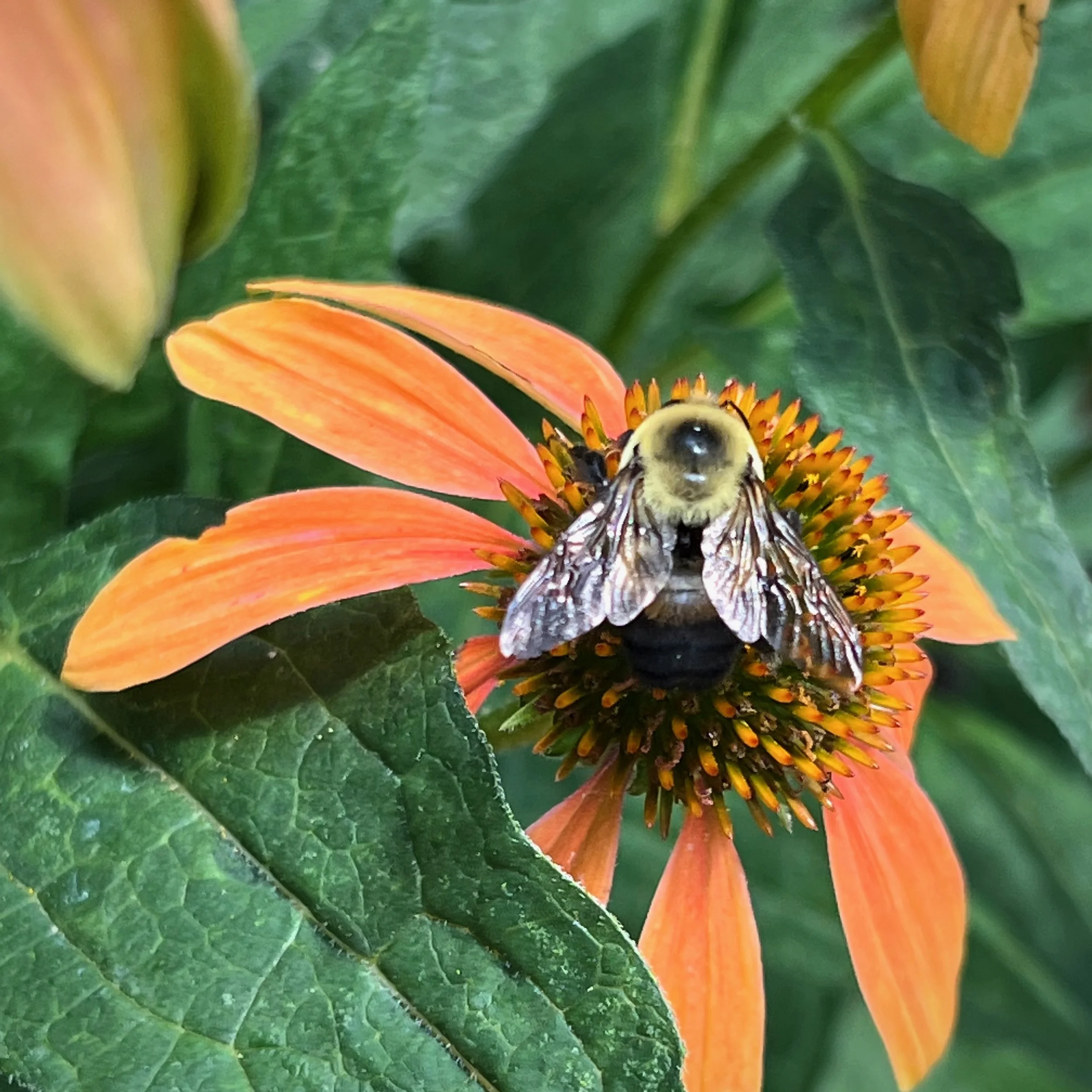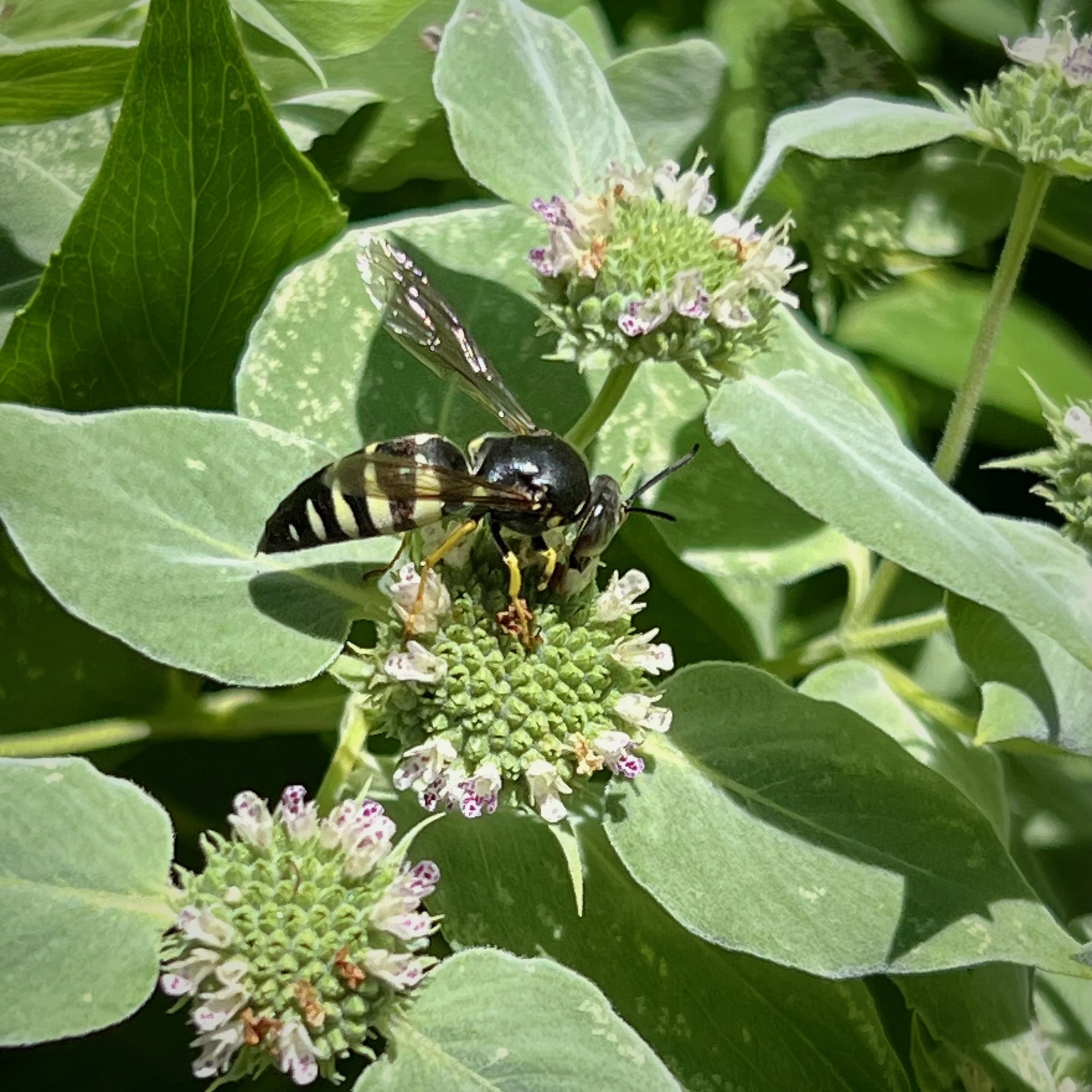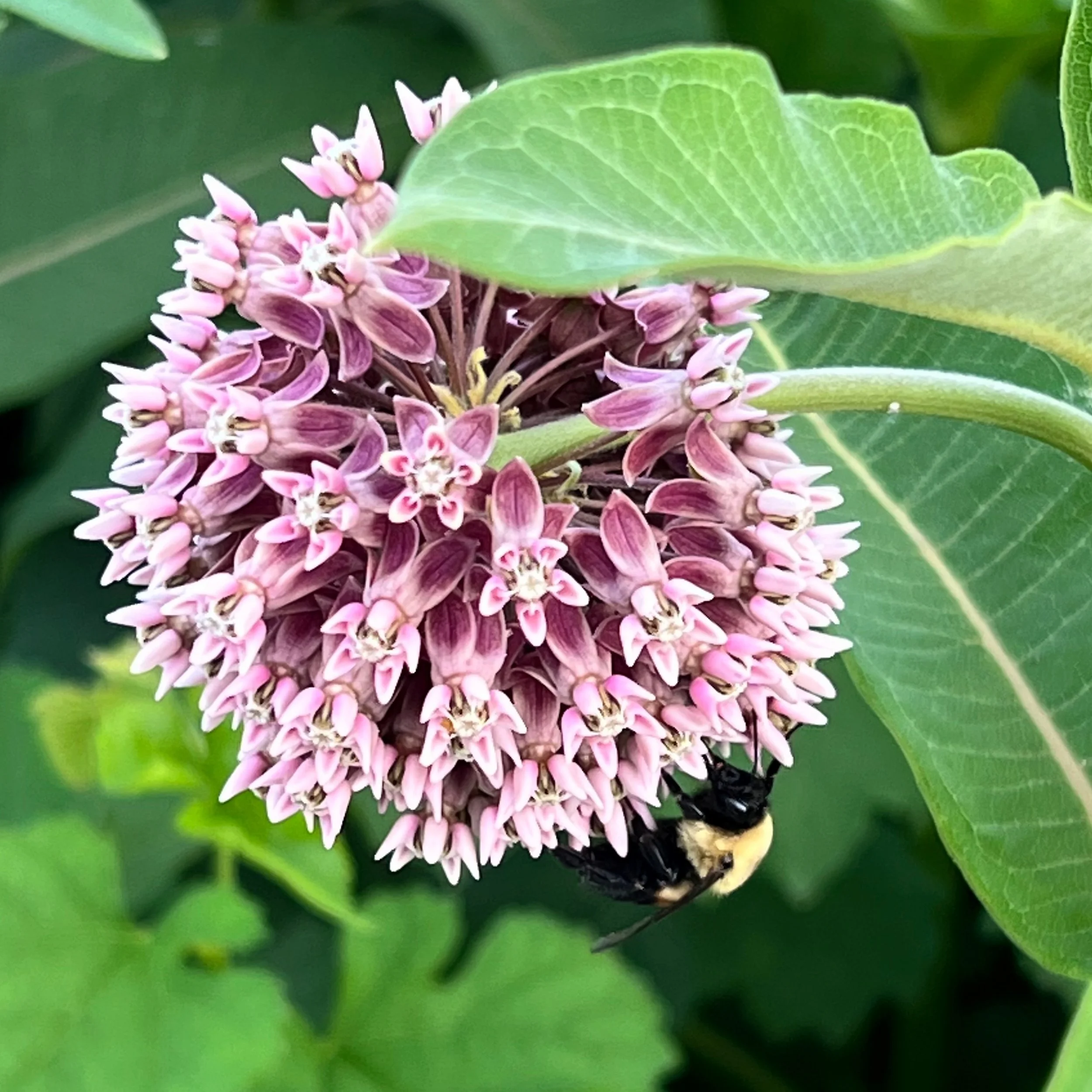Urban Pollinators Need Our Help
Many of the plant foods that we eat depend on pollinators. So do the plants that feed our sources of meat and the wildlife around us. In fact, a majority of plants depend on pollinators—including bees, flies, wasps, ants, beetles, moths, butterflies, and birds—to reproduce. And the crucial role they play in our food system is not one we can easily replace.
Yet as we humans claim more of the land for ourselves, pollinators are struggling. Urban environments are a harsh place for any creature to live in, but the threats are especially apparent if you’re an insect. Excessive heat, compact soils, large expanses of concrete and asphalt, pollution, noise, traffic, and lots of people pose constant threats. The healthy, abundant flowering plants pollinators need to survive are few and far between.
The Problem with Urban “Greenspaces”
If we take a step back and think about our cities as places for biodiversity, it’s clear that we have done a poor job giving life a chance to thrive in urban areas. Instead, our urban “greenspaces” are squeezed in along roads, tucked around building bases, or marooned in oceans of concrete. The plants that will survive in such extreme conditions and still look aesthetically pleasing must be tough, so we choose the same handful of non-native ornamental plants. The problem is that this approach has stripped our urban cores of biodiversity. Without a diversity of plants, it is impossible for a diversity of insects—or any other type of creatures—to thrive in these spaces.
Cities and insects aren’t inherently incompatible. In fact, cities could support a huge diversity of insects—if we utilized the right plants in small pockets of greenspace throughout urban areas. The way we treat our yards, gardens, and greenspaces has an impact on thousands of species of pollinators that feed on our flowers and blooming trees.
Step One: Increase Biodiversity
Many of our native insects can adapt relatively quickly to harsh conditions and can thrive in incredibly small habitats. Many of our native bees, for example, may only travel a few hundred yards during their entire lifetime. That means one well designed urban pollinator garden could offer permanent residence to thousands of insects within a growing season.
Adding plant diversity within your own yard is a great step toward increasing biodiversity in your neighborhood. Choose native plants when you can. Once you’ve worked on your own yard, try convincing a neighbor to join you in your effort to increase biodiversity. If your whole street got on board, just think about the amount of habitat you could create!
Step Two: Zoom Out
In addition to individuals increasing biodiversity in their own yards, we have to zoom out as well. An insect may be content surviving its entire life within the confines of a singular garden space. But if a bee, for instance, lives its entire life within a small garden area surrounded by roads or large expanses of mowed grass, it may only interact with bees from the same garden. Over time, this population of bees will lose its genetic diversity and become more susceptible to diseases and other threats.
It’s up to us to make sure that no garden space is too isolated from others so that insects and other wildlife can move safely from one garden to the next, encouraging genetic diversification. This is where greenspace corridors come into play, ensuring that every garden has another garden close by.



